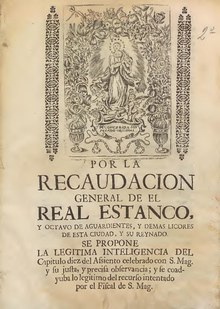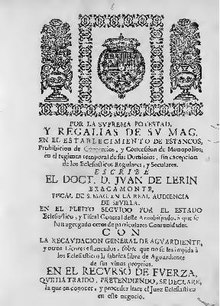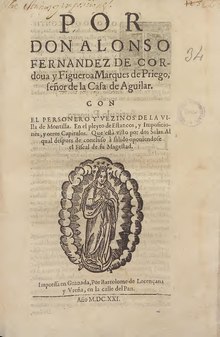Watertight
The tobacconist is an institution with a state monopoly on the production, distribution, import and sale of a good (see State monopoly). The term originates in Spain, spreading from there to other Spanish-speaking countries. Currently, the most common tobacconists are tobacco, postage stamps and, in some countries, spirits or beer. Spanish tobacconists have nearly 400 years of history, playing an important role in collecting taxes for the state through the sale of tobacco products.
First tobacconists
In Spain there were two major tobacconists: salt and tobacco, and several smaller tobacconists: brandy, saltpeter, sulfur, gunpowder, lead, antimony, mercury, vermilion, shellac, card games, and sealed paper.
One of the oldest tobacconists (which apparently dates from the XIV century), is the salt of the kingdom of Aragon, which regulated the sale and did not allow the importation. In 1543 the card game was created, not only for tax purposes, but to ensure that the printing was correct to prevent players from cheating in the game because they knew about printing defects, and there were no fights. In 1634, the tobacconist's shop was established in the crown of Castilla, which turned the sale into a monopoly and an important source of income for the state.
Royal Salt Tobacconist
In 1564 Felipe II organized the Estanco de la sal in Castilla, except Andalusia, as a means of collecting taxes for the crown. Another intention of this measure was to standardize the price of salt in the different territories, prices that were previously very different, although the result was an increase in all of them. This tobacconist became the most important in the crown, until the decade of the 30th century XVII, in which it was surpassed by tobacco. He disappeared on January 1, 1870, by Law of June 16, 1869.
The Royal Tobacco Store
It is claimed that tobacco was not seen in Spain until 1542 and that around this time a considerable portion of the islands of Cuba and Santo Domingo came to Seville, where there were some private factories for its production. In the Cortes of 1636 its tobacconist was decreed, the Kingdom agreeing on August 2, 1638 that the tobacco product be chosen among the taxes for the payment of the two and a half million, providing that as long as it is not leased, each pound will be charged. three reales, both for what was intended to be sold, and for what was dedicated to gifts. This right should be collected at the Seville Customs or in the others because it entered and penalties were imposed on those who violated this provision. Subsequently, in the Cortes of 1650, the tobacconist was perpetuated in the kingdoms of Castilla and León.
Tobacco and stamp shops, popularly known as estancos, have a wide network strategically distributed throughout Spain. This network is made up of 16,049 outlets that provide efficient coverage to 47 million Spaniards. The Commissioner for the Tobacco Market periodically awards new contests in all corners of Spain.
The importance of monopoly for the Spanish State
State tobacco and stamp shops are a vitally important source of income for the Spanish State, as stated in the explanatory statement of Law 13/98 of May 4:
“The maintenance of State ownership in the monopoly on trade for the minor in tobacco labour, which continues to revise the nature of public service, constitutes an instrument fundamental and irrenunciable State for the control of a stagnant product such as tobacco, with significant customs and tax impact. »
Being a regulated market, tobacconists have a very limited presence on the Internet. However, some tobacconists have an online presence.
The figures
The monopoly of tobacco and stamp shops in Spain moves a business with a volume of €12,500 million per year according to data from the Commissioner for the Tobacco Market. Of these €12,500 million, the Spanish State benefits from €9,400 million that go entirely to the public treasury, thus turning the State monopoly into an essential means.
However, this is not the only function of tobacconists. At present they are a valuable ally in the fight against smoking, since the professionalization of the network includes in its statutes all the measures in force to prevent minors from accessing tobacco use, protects adult consumers from oligopolies that could promote the consumption of tobacco and guarantees said consumers the legality and adequate conservation of their products.
Recently, the health function of tobacconists has been reinforced by the Spanish state and by another 120 signatory countries in the framework agreement of the World Health Organization for the control of tobacco in all its scale, from manufacturing to sale retail, as reflected in part 3 - article 6 - annex 2 of said treaty:
Each Party shall endeavour to grant a licence, to the extent it deems appropriate, and where the following activities are not prohibited by national legislation, to any natural or legal person who is referred to as follows: a) retail sale of tobacco products.
Recharge prepaid cards
Tobacconists are offering other common services, such as recharging prepaid telephone cards and urban transport cards.
Oils
Although it never bore the name of a tobacconist, during the Primo de Rivera dictatorship the oil monopoly was established (Ley del Monopoly de Petróleos by Royal Decree-Law of June 28, 1927) with a leasing company (CAMPSA) that it continued its journey until it lost the monopoly in 1986.
Tobacconists in America
During Spanish rule over a large part of America, different tobacconists were established there, which regulated the monopoly over different resources. On occasions, its administration was leased or granted, thereby varying the total income that the Crown received.
Royal Tobacco Store
In the 18th century the cultivation and trade of tobacco was monopolized in some regions of America, highlighting the creation of the Royal Estanco del Tabaco de la Nueva España, which controlled the production of its territory, including Cuba, Puerto Rico and Santo Domingo.
Royal Seal of Dyes and Colors
After mining, the production and trade of dyes and pigments was the most profitable industry of the Spanish empire in America. In the XVI century, the monopoly known as the Real Estanco de Tintes y Colores was established, which was granted by royal mercy to the counts of Osorno, passing by succession to the House of Alba. Its validity lasted until independence.
Royal Estanco de Aguardientes y Liquors
Saltpeter pond
To eliminate competition in the international market between fertilizers (both produced by Peru) guano and saltpeter, the Republic of Peru created in 1873 the "Estanco del Salitre". All nitrate producing companies in Peru had to abide by the quantities and prices dictated by the government. However, due to the lack of experienced fiscal employees, resistance from nitrate producers, and Valparaíso's strength as a nitrate marketing center, the estanco did not function. In 1876 the Peruvian state decreed the nationalization of the nitrate producing industry. The Peruvian attempt to also control Bolivian nitrate production was one of the causes of the War of the Pacific.
Contenido relacionado
Creole
22nd century BC c.
Panfilo de Narvaez




